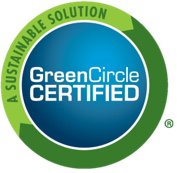Energy Optimization: 3 Ways Manufacturers Are Optimizing Energy Consumption
Over the past 50 years, global energy consumption has consistently risen due to increasing demand and population growth. However, this surge has negatively impacted the planet, contributing to a 1.5°C rise in global temperatures and posing serious challenges to ecosystems. As the depletion of natural resources like natural gas accelerates, energy remains a central focus of sustainability efforts. Now more than ever, energy consumption plays a crucial role in assessing a product's environmental impact.
Manufacturers are focusing on three key strategies to optimize energy consumption and minimize environmental impact:
Sustainable Energy Practices – Enhancing manufacturing processes to improve energy efficiency and reduce overall environmental impact.
Carbon Footprint Reduction – Decreasing greenhouse gas (GHG) emissions across a product's life cycle, including direct emissions (Scope 1) and indirect emissions (Scope 2 and 3).
Product Design – Use Phase – Designing products to minimize energy consumption during their use phase while promoting sustainable consumer behavior.
Overview of Indirect and Direct Emissions
Source: WRI/WBCSD Corporate Value Chain (Scope 3) Accounting and Reporting Standard (PDF), page 5.
Sustainable energy practices focus on reducing energy consumption, minimizing onsite fossil fuel use, and increasing reliance on renewable or carbon-free energy. Manufacturers are transitioning to renewable sources such as solar, wind, hydro, and geothermal to replace fossil fuels. These alternatives not only conserve finite resources like coal and oil but also drive job creation as demand for clean energy grows.
Despite advancements in renewables, electricity generation is still largely dependent on burning coal and natural gas, which release greenhouse gases (GHGs), produce solid waste, and pollute land and water. In the United States, 60% of carbon emissions come from power plants fueled by coal and natural gas. To improve sustainability, manufacturers are setting carbon footprint reduction goals that address energy consumption throughout a product’s life cycle. These goals consider both direct emissions (from vehicles and equipment) and indirect emissions (from suppliers and production processes). By establishing a baseline, manufacturers work to optimize GHG emissions through responsible sourcing, energy management, and waste reduction.
Preliminary US Greenhouse Gas Estimates for 2024
Source: Rhodium Group, EPA
Thoughtful product design and mindful consumer choices are key to enhancing energy efficiency. This approach has led to the innovation of energy-efficient products and the widespread adoption of advanced technologies. In refrigerators, compressor technology has significantly improved over the past 30 years, optimizing cooling based on demand and reducing energy waste by minimizing unnecessary on-and-off cycles. However, achieving true energy efficiency involves more than just upgrading the compressor. The overall design—including insulation, refrigerator capacity, and the materials used in manufacturing—plays a crucial role in creating an energy-efficient product that lowers environmental impact.
Manufacturers implement these key strategies together to minimize the energy impact of their products. Consumers increasingly seek products that highlight sustainability achievements, and certifications like Certified Energy Savings and Sustainable Energy Practices from GreenCircle Certified help them make informed choices in a rapidly evolving market, ensuring they select products that benefit both the environment and society.
Written by Sara Risley, Certification Officer, GreenCircle Certified
About Sara
Sara brings over 15 years of experience in product certification and regulatory compliance. Before joining GreenCircle, she served as the Vice President of Certification at Green Seal, where she led the certification department for two years. Prior to that, she led NSF International's food product certification division, overseeing independent verification for food labels and packaging claims such as Organic and Non-GMO certifications. Additionally, she spent five years as the technical operations lead at NSF International, managing ANSI-accredited standards for commercial food equipment, food contact materials, and water filters.
Looking to Learn More? Check Out Our Upcoming Webinar
February 26th, 2025
11:00 am - 12:00 pm EST
Join us for an insightful webinar on Global Standards in Sustainable Energy: Reducing Carbon Footprint and Certifying Impact hosted by Sara Risley, the Certification Officer at GreenCircle Certified. This session will explore the growing importance of sustainable energy practices and how businesses can take actionable steps toward achieving sustainability goals, reducing their carbon footprint, and certifying their efforts through GreenCircle Certified’s Sustainable Energy Practices (SEP) certification. Attendees will learn about global trends in renewable energy, real-world case studies, and strategies for meeting greenhouse gas reduction targets.







